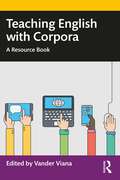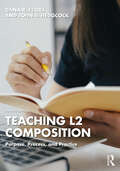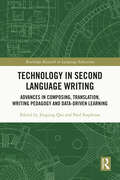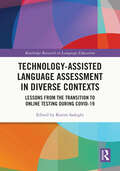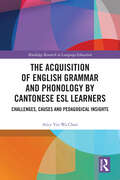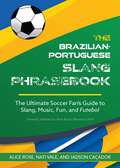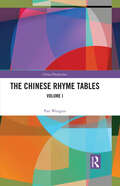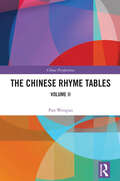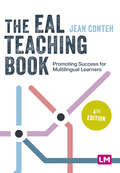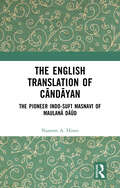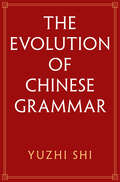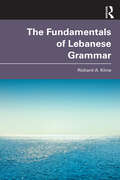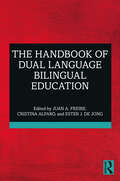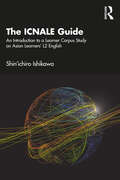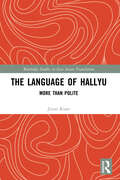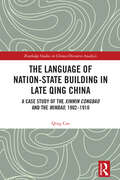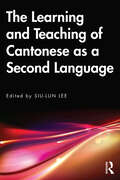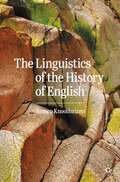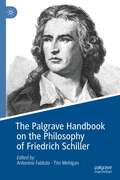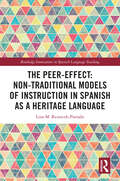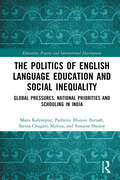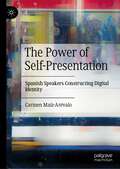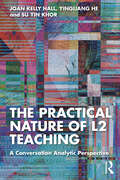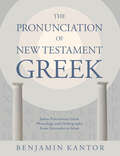- Table View
- List View
Teaching English with Corpora: A Resource Book
by Vander VianaTeaching English with Corpora is an accessible and practical introduction to the ways in which online and offline corpora can be used in English language teaching (ELT). Featuring 70 chapters written by an international range of researchers and practitioners, this book: • provides readers with clear, tested examples of corpus-based/driven lesson plans; • contains activities relevant to English for general purposes and English for specific purposes; • caters for the needs of English language teachers working with learners at different proficiency levels; • features flexible teaching suggestions that can be explored as part of a lesson or as a full lesson. This book is an essential purchase for pre- and in-service English language teachers as well as those studying corpus linguistics in undergraduate/Master’s courses in applied linguistics, ELT and Teaching English to Speakers of Other Languages (TESOL).
Teaching L2 Composition: Purpose, Process, and Practice
by Dana R. Ferris John S. HedgcockThis popular, comprehensive theory-to-practice text helps teachers understand the task of writing, L2 writers, the different pedagogical models used in current composition teaching, and reading-writing connections. Moving from general themes to specific pedagogical concerns, it includes practice-oriented chapters on the role of genre, task construction, course and lesson design, writing assessment, feedback, error treatment, and classroom language (grammar, vocabulary, style) instruction. Each chapter includes Questions for Reflection, Further Reading and Resources, Reflection and Review, and Application Activities. An ideal text for L2 teacher preparation courses and in-service writing instructors, the text offers an accessible synthesis of theory and research that enables readers to see the relevance of the field’s knowledge base to their own present or future classroom settings and student writers. New to the Fourth Edition: Updated with new research, theory, and developments in the field throughout the text Visually accessible layout and design for improved reader navigability Expanded attention to technological affordances for writing pedagogy Stand-alone reference list in each chapter Support Material with activities and resources from the text also available on the book’s webpage at www.routledge.com/9780367436780
Technology in Second Language Writing: Advances in Composing, Translation, Writing Pedagogy and Data-Driven Learning (Routledge Research in Language Education)
by Jingjing Qin Paul StapletonThis edited volume showcases state-of-the-art research in technological applications in second language writing. It examines multimodal composing, digital feedback, data-driven learning, machine translation and technological applications in writing pedagogy. Technology in Second Language Writing reflects the rapidly changing field of technology in second language learning and highlights technological advances across different areas relevant to L2 writing. Composed of empirical studies, reviews, and descriptive essays, this book covers a variety of topics across the areas of composing, pedagogy, and writing research. It includes discussion of computer-mediated communication, language learners’ perceptions about using technology in their writing, the use of social media in writing, corpus learning, translation software, and use of electronic feedback in language classrooms. Offering a multifaceted approach to technology in a wide variety of second language writing contexts, this cutting-edge book serves as essential reading for scholars and postgraduate students in the field of language teaching, applied linguistics, and TESOL.
Technology-Assisted Language Assessment in Diverse Contexts: Lessons from the Transition to Online Testing during COVID-19 (Routledge Research in Language Education)
by Karim SadeghiThis timely collection explores the role of digital technology in language education and assessment during the COVID-19 pandemic. It recognises the unique pressures which the COVID-19 pandemic placed on assessment in language education, and examines the forced shift in assessment strategies to go online, the existing shortfalls, as well as unique affordances of technology-assisted L2 assessment. By showcasing international examples of successful digital and computer-assisted proficiency and skills testing, the volume addresses theoretical and practical concerns relating to test validity, reliability, ethics, and student experience in a range of testing contexts. Particular attention is given to identifying lessons and implications for future research and practice, and the challenges of implementing unplanned computer-assisted language assessment during a crisis. Insightfully unpacking the ‘lessons learned’ from COVID and its impact on the acceleration of the shift towards online course and assessment delivery, it offers important guidelines for navigating assessment in different instructional settings in times of crisis. It will appeal to scholars, researchers, educators, and faculty with interests in educational measurement, digital education and technology, and language assessment and testing.
The Acquisition of English Grammar and Phonology by Cantonese ESL Learners: Challenges, Causes and Pedagogical Insights (Routledge Research in Language Education)
by Alice Yin ChanChan’s exploration of the acquisition of English grammar and phonology by Cantonese learners of English as a Second Language (ESL) offers insights into the specific challenges that learners often encounter and posits ways to help them overcome those challenges. Possible sources of the challenges are also examined. The book covers the basic differences between English and Cantonese grammar as well as those between English and Cantonese phonology. Chan discusses the kinds of grammatical and phonological problems that Cantonese ESL learners often have in their acquisition of English. In terms of grammar, various structures are reviewed, including errors which are clearly due to L1 interference and also those which may not be directly L1-related. Learners’ common misconceptions about relevant concepts are also revealed. In terms of phonology, both speech perception and speech production problems at the segmental and suprasegmental levels are examined. For learner problems which may be the result of L1 interference, a contrastive approach is adopted in analysing the cause and nature of the errors. Chan also offers readers pedagogical insights to target common grammatical problems, including the use of an algorithmic approach, the use of a discovery-based consciousness-raising approach and the use of metalinguistic explanations. As far as the learning of English phonology is concerned, she argues that the training of speech production should go hand-in-hand with that of speech perception. Future research can experiment with the proposed teaching ideas with Cantonese ESL learners and learners of other native languages. Researchers and ESL teaching professionals will find the insights and research contained within this volume invaluable when encountering or researching Chinese ESL learners.
The Brazilian-Portuguese Slang Phrasebook: The Ultimate Soccer Fan's Guide to Slang, Music, Fun and Futebol
by Alice Rose Nati Vale Jadson CaçadorLearn to speak like a local before you hit the streets of Sao Paulo or beaches of Rio de Janeiro with this pocket-sized Brazilian Portuguese-English phrasebook.With this book in hand you can get off the sideline and join the local Brazilians as they party from the pitch to the beach. Chock-full of up-to-date slang phrases, after-hours expressions and insider information on futebol, this book will have you cheering, dancing, drinking and celebrating with the die-hard fans of the beautiful game. What&’s up, man? Iaí, cara? Can I join your pickup game? Posso bater uma pelada com vocês? Where is a cool bar to watch the game? Onde tem um barzinho legal pra assitir o jogo? Next round&’s on me. A proxima rodada é minha. We&’re all going to an underground dance club, wanna join? A gente vai pra um baile funk, tá afim? That girl in the VIP section is super hot. Aquela mina no camarote é muito gostosa. Let&’s sleep off our hangovers at the beach. Vamos curar a ressaca na praia.
The Chinese Rhyme Tables: Volume I (China Perspectives)
by Pan WenguoAs the first volume of a two-volume set that studies Chinese rhyme tables, this book focuses on their emergence, development, structure, and patterns. Rhyme tables are tabulated tool constituted by phonological properties, which helps indicate the pronunciation of sinograms or Chinese characters, marking a precise and systematic account of the Chinese phonological system. This volume first discusses the emergence of the model and factors that determined its formation and evolution, including the Chinese tradition of the rhyme dictionary and the introduction of Buddhist scripts. The second part analyzes the structure and arrangement patterns of rhyme tables in detail, giving insights into the nature of “division” (deng): the classification and differentiation of speech sounds, of vital significance in the reconstruction of middle Chinese. The author argues that deng has nothing to do with vowel aperture or other phonetic features but is a natural result of rhyme table arrangement. He also reexamines the principles for irregular cases (menfa rules) and categorizes the 20 rules into three types.The book will appeal to scholars and student studying linguistics, Chinese phonology, and Sinology.
The Chinese Rhyme Tables: Volume II (China Perspectives)
by Pan WenguoAs the second volume of a two-volume set that studies the Chinese rhyme tables, this book seeks to reconstruct the ancient rhyme tables based on the extant materials and findings. A rhyme table is a tabulated tool constituted by phonological properties, which helps indicate the pronunciation of sinograms or Chinese characters, marking an accurate and systematic account of the Chinese phonological system. The book first explores the relationship and identifies the prototype of the extant rhyme tables. Then the principles and methods for collating and rebuilding the ancient rhyme table are introduced. It then looks at the general layout, including tables, table order, shè, zhuǎn, rhyme heading, rhyme order, light and heavy articulations, rounded and unrounded articulations, and initials. The final chapter presents the reconstructed rhyme tables with detailed annotations and add-on indexes. The book will appeal to scholars and students studying Sinology, Chinese linguistics, and especially Chinese phonology.
The EAL Teaching Book: Promoting Success for Multilingual Learners (Primary Teaching Now)
by Jean ContehAs the number of children for whom English is an Additional Language in schools increases, how do teachers and trainees prepare to support them to succeed? A complete guide to understanding, learning from and teaching bilingual and EAL children in schools. The text begins by asking ′who are EAL learners′ and challenges some of the misconceptions about this group. It goes on to examine language in depth, providing focused theory to help teachers and trainees better understand the wider context of children′s needs. This theory is supported by a wealth of information on practical teaching strategies and resources in the promoting learning section. The text covers planning across the curriculum for EAL and offers day-to-day practical support for teachers. The fourth edition is updated throughout and includes a new chapter on EAL and SEND.
The EAL Teaching Book: Promoting Success for Multilingual Learners (Primary Teaching Now)
by Jean ContehAs the number of children for whom English is an Additional Language in schools increases, how do teachers and trainees prepare to support them to succeed? A complete guide to understanding, learning from and teaching bilingual and EAL children in schools. The text begins by asking ′who are EAL learners′ and challenges some of the misconceptions about this group. It goes on to examine language in depth, providing focused theory to help teachers and trainees better understand the wider context of children′s needs. This theory is supported by a wealth of information on practical teaching strategies and resources in the promoting learning section. The text covers planning across the curriculum for EAL and offers day-to-day practical support for teachers. The fourth edition is updated throughout and includes a new chapter on EAL and SEND.
The English Translation of Cāndāyan: The Pioneer Indo-Sufī Masnavī of Maulanā Dāūd
by Naseem A. HinesThis book is the first English translation of Cāndāyan, the pioneer work in a long tradition of Indian-Sufi love narratives. The story was adapted from an oral epic Chanaini, popular in the Awadhi speaking region of north India in the fourteenth century. The early manuscripts of Cāndāyan, though composed in the Awadhi dialect, were recorded in the Persian script. Each stanza-like unit is introduced by a phrase or sentences in the Persian language style, making it necessary for a reader to know the Persian script and language, as well as the Awadhi dialect. This somewhat limits the access to fully explore Cāndāyan. In addition to this, the esoteric interpretation, which is the distinguishing feature that gives the Indian-Sufi masnavī literature its unique identity, was also not yet realized. Cāndāyan deserves to be celebrated and recognized because it marks the beginning of the indigenizing process of the masnavī in India, and served as a model for this literary genre for the next 540 years. A serious study of Maulana Daud’s Cāndāyan, composed in 1379, in the reign of Firoz Shah Tughlaq, did not begin until well into the twentieth century because only a few pages of its manuscript folios were discovered at a time, in various academic institutions and museums around the world. Cāndāyan is a fascinating study of the blending of the features of the Persian masnavī with the features of the Hindi premākhyān narratives and the features of the medieval Jain literature. Even today, annually in the Mahakoshala region Cāndāyan is presented in the form of drama and in the folk-song and play forms. Print edition not for sale in South Asia (India, Sri Lanka, Nepal, Bangladesh, Pakistan and Bhutan)
The Evolution of Chinese Grammar
by Yuzhi ShiThe Chinese language has the longest well-documented history among all human languages, making it an invaluable resource for studying how languages develop and change through time. Based on a twenty-year long research project, this pioneering book is the English version of an award-winning study originally published in Chinese. It provides an evolutionary perspective on the history of Chinese grammar, tracing its development from its thirteenth-Century BC origins to the present day. It investigates all the major changes in the history of the language within contemporary linguistic frameworks, and illustrates these with a wide range of examples taken from every stage in the language's development, showing how the author's findings are relevant to contemporary descriptive, theoretical, and historical linguistics. Shedding light on the essential properties of Chinese and, ultimately, language in general, it is essential reading for academic researchers and students of Asian linguistics, historical linguistics and syntactic theory.
The Fundamentals of Lebanese Grammar
by Richard A. KlineThe Fundamentals of Lebanese Grammar provides a comprehensive guide to the grammar of the spoken language of Lebanon. It presents the fundamentals and complexities of the Lebanese variety of Arabic in a practical and organized way. This guide also utilizes side-by-side transliterations in both the Arabic script and the Latin alphabet in the way that they are used by native speakers. The explanations of the grammar concepts are presented in English and are made to be easily understandable for everyone, regardless of prior linguistic knowledge. Special features of this text include endnotes on culture, expressions, and an entire chapter dedicated to regional varieties of Lebanese. This book is an essential tool for all learners of the Lebanese variety of Arabic, and it is a useful resource for every stage of the language learning process, from beginner to advanced.
The Handbook of Dual Language Bilingual Education
by Juan A. Freire Cristina Alfaro de Jong, Ester JThis handbook presents a state-of-the-art overview of dual language bilingual education (DLBE) research, programs, pedagogy, and practice. Organized around four sections—theoretical foundations; key issues and trends; school-based practices; and teacher and administrator preparation—the volume comprehensively addresses major and emerging topics in the field. With contributions from expert scholars, the handbook highlights programs that honor the assets of language-minoritized and marginalized students and provides empirically grounded guidance for asset-based instruction. Chapters cover historical and policy considerations, leadership, family relations, professional development, community partnerships, race, class, gender, and more. Synthesizing major issues, discussing central themes and advancing policy and practice, this handbook is a seminal volume and definitive reference text in bilingual/second language education.
The ICNALE Guide: An Introduction to a Learner Corpus Study on Asian Learners’ L2 English
by Shin'ichiro IshikawaThis book provides a practical and extensive guide for the International Corpus Network of Asian Learners of English (ICNALE), a unique dataset including more than 15,000 samples of Asian learners’ L2 English speeches and essays. It also offers approachable introductions to a variety of corpus studies on the aspects of Asian learners’ L2 English. Key topics discussed in the book include: background, aims, and methods of learner corpus research principles, designs, and applications of the ICNALE vocabulary, grammar, and pragmatics in Asian learners’ L2 English, and individual differences of Asian learners and assessments of their speeches and essays With many case studies and hands-on guides to utilise ICNALE data to the fullest extent, The ICNALE Guide is a unique resource for students, teachers, and researchers who are interested in a corpus-based analysis of L2 acquisition.
The Language of Hallyu: More than Polite
by Jieun KiaerThe Language of Hallyu will re-examine the language of the Korean Wave by looking at popular K-content. In doing so, it will expose the meanings that get lost in translation, hidden under subtitles. Over the past decade, hallyu (the Korean wave) has exploded in popularity around the globe. K-films, K-drama, and K-pop were once small subcultures, known mostly by Korea’s East and Southeast Asian neighbours and Korean diaspora. Now, K-content has entered the international mainstream. Consequently, interest in Korean language has grown, while interest in language learning in general has decreased. Many textbooks emphasise that Korean is a ‘polite’ language, but this book will highlight that this is not the case. The Language of Hallyu examines popular K-content, including Parasite (2019), Minari (2020), Squid Game (2021), and Pachinko (2022). The author introduces language stylistics to explain how Koreans style their language to suit every occasion. She argues that they do this via a process of visual scanning and social tuning, whereby visual clues are assessed in tangent with an individual’s sociocultural awareness. The author concludes by highlighting the danger of the jondaemal/banmal (polite/casual speech) divide, demonstrating that Korean language is so much more than polite. This book will be of interest to students and researchers in Korean language and culture, particularly those interested in linguistics and pragmatics.
The Language of Nation-State Building in Late Qing China: A Case Study of the Xinmin Congbao and the Minbao, 1902-1910 (Routledge Studies in Chinese Discourse Analysis)
by Qing CaoThe Language of Nation-State Building in Late Qing China investigates the linguistic and intellectual roots of China’s modern transformation by presenting a systematic study of the interplay between language innovation and socio-political upheavals in the final decade of the Qing Dynasty. This book examines the formations, internal tensions, and promotion of such macroconcepts as ‘nation people’ (guomin国民), nation (minzu民族), society (qun群), state (guojia国家) and revolution (gemin革命) as novel ideas borrowed from Europe but mediated through Meiji Japan. Using corpus-based discourse analysis of the full-text corpus (4.2 million words) of the two most influential periodicals Xinmin Congbao (新民丛报) and Minbao (民报), this book scrutinises the multi-faceted formulations of these concepts and their impact. It underscores the adaptation and appropriation of European post-enlightenment values to the socio-political conditions of late Qing society. The analysis centres on the epic debate (1905-07) between these two periodicals that offered two distinctive visions of future China. Comparable to the 18th century great debate between Edmund Burke and Thomas Paine on the French Revolution, the Chinese debate has hitherto attracted little scholarly attention outside China. Yet, the debate not only turned the tidal wave of the public opinion against the Manchu monarchy and contributed to its downfall in 1911; it has given rise to a radical current of intellectual thinking whose ramifications have been keenly felt throughout 20th century China. This book represents the first study in English on this press debate that contributes significantly to the intellectual foundation of modern China. This book will be useful and relevant to academics, postgraduate students and final year undergraduate students in the field of Chinese Studies, and anyone interested in the role of language in shaping modern intellectual history.
The Learning and Teaching of Cantonese as a Second Language
by Siu-Lun LeeThe Learning and Teaching of Cantonese as a Second Language brings together contributions on such issues as Cantonese textbooks, linguistic description, literacy and tone acquisition, supplemented by case studies from the Netherlands and Japan. The learning and teaching of Cantonese as a second language is a subject of considerable interest in the international academic community, and the first international symposium on teaching Cantonese as a second language, held at the Chinese University of Hong Kong in October 2019, brought together leading researchers in this field. This conference provided the inspiration for the current volume, The Learning and Teaching of Cantonese as a Second Language. In the Hong Kong context, historically, the term ‘Cantonese’ refers to the language varieties of immigrants who came to the territory from various areas in Guangdong province, including Macau, Panyu, Taishan, Xinhui and Zhongshan. From the late nineteenth century onwards, their speech coalesced into the contemporary variety of Cantonese used in Hong Kong today. The term ‘Cantonese’ is also used to refer to the entire Yue subgroup of Chinese, which includes varieties of Cantonese spoken in southern China, Hong Kong, Macau, Malaysia, Singapore and among overseas Chinese in Australia, Europe and North America. In all, it is estimated that there are about 70 million Cantonese speakers in the world. This volume is of direct relevance to educators, language teachers, linguists and all those concerned with the learning of Cantonese as a second language.
The Linguistics of the History of English
by Remco KnooihuizenThis textbook approaches the history of English from a theoretical perspective. The book provides a brief chronological overview describing the way in which the English language has changed over time from Old English to Modern English, while subsequent parts adopt a theoretical focus that is thematically organised to deal with the question of how and why English changed in the way it did, including a part addressing some specific contact-induced changes and key topics such as English as a Lingua Franca. Supported throughout with information boxes with empirical studies, the examples given are all drawn from English, but boxes with examples from other languages tie the development of the English language into changes in other contexts and settings. This book is an ideal resource for undergraduate students of the English Language and historical linguistics.
The Palgrave Handbook on the Philosophy of Friedrich Schiller
by Antonino Falduto Tim MehiganFriedrich Schiller is justly celebrated for his dramas and poetry. Yet, above all, he was a polymath, whose writings enriched a range of fields including history and philosophy. Until now, no comprehensive accounting of this philosophy has been undertaken. The Palgrave Handbook on the Philosophy of Friedrich Schiller makes good this desideratum, treating Schiller's poetry, prose, and dramatic work alongside his philosophical writings and reviewing his thought not only in connection with those who influenced him, such as Kant, Reinhold, and Fichte, but also those he anticipated, such as Hegel, Marx, and the Neo-Kantians. Topics treated in this volume include Schiller's philosophical background, his theoretical writings, Schiller's philosophical writing in light of his entire oeuvre, and Schiller's philosophical legacy. The Handbook also includes an overview of the main topics Schiller addressed in his philosophical writings including philosophical anthropology, aesthetics, moral philosophy, politics and political theory, the philosophy of history, and the philosophy of education. Bringing together the latest research on Schiller and his thought by leading scholars in the field, the Handbook draws attention to Schiller's undiminished importance for philosophical debates today.
The Peer-Effect: Non-Traditional Models of Instruction in Spanish as a Heritage Language (Routledge Innovations in Spanish Language Teaching)
by Lina M. Reznicek-ParradoThe Peer Effect: Non-Traditional Models of Instruction in Spanish as a Heritage Language guides an important pedagogical conversation on the relevance of heritage language and literacy practices as resources for instruction, framing heritage teaching and learning as a social justice issue. Presenting ethnographic and discourse analyses of a heritage peer tutoring program at a university in California, this book focuses on the ways in which the dynamic translanguaging practices that Spanish heritage language (SHL) peer tutors mobilize in a non-classroom, student-led, collaborative academic space directly respond to the literacy demands of academic language development. Based on the in-depth analysis of peer tutors’ translingual practices, the book advances scholarship in SHL pedagogy, providing concrete classroom-based examples, techniques, and activities that nurture equitable pedagogies for heritage student belonging, while challenging the deficit discourse that has traditionally governed the dialogue around literacy instruction for multilingual students. This versatile volume is designed for educators, researchers, practitioners, and students in the fields of heritage language pedagogy, bilingual education, educational linguistics, and literacy studies for multilingual students.
The Politics of English Language Education and Social Inequality: Global Pressures, National Priorities and Schooling in India (Education, Poverty and International Development)
by Maya Kalyanpur Padmini Bhuyan Boruah Sarina Chugani Molina Sunaina ShenoyBased on policy analysis and empirical data, this book examines the problematic consequences of colonial legacies of language policies and English language education in the multilingual contexts of the Global South. Using a postcolonial lens, the volume explores the raciolinguistics of language hierarchies that results in students from low-income backgrounds losing their mother tongues without acquiring academic fluency in English. Using findings from five major research projects, the book analyzes the specific context of India, where ambiguous language policies have led to uneasy tensions between the colonial language of English, national and state languages, and students’ linguistic diversity is mistaken for cognitive deficits when English is the medium of instruction in schools. The authors situate their own professional and personal experiences in their efforts at dismantling postcolonial structures through reflective practice as teacher educators, and present solutions of decolonial resistance to linguistic hierarchies that include critical pedagogical alternatives to bilingual education and opportunities for increased teacher agency. Ultimately, this timely volume will appeal to researchers, scholars, academics, and students in the fields of international and comparative education, English and literacy studies, and language arts more broadly. Those interested in English language learning in low-income countries specifically will also find this book to be of benefit to their research.
The Power of Self-Presentation: Spanish Speakers Constructing Digital Identity
by Carmen Maíz-ArévaloThis book follows a Goffmanian approach to self-presentation to focus on the different strategies Spanish users employ to construct their digital identity in profiles, biographies, pictures, and statuses on platforms such WhatsApp, Twitter, Facebook, Instagram and LinkedIn. The author presents a functioning taxonomy of self-presentation strategies along the front-stage/back-stage continuum, including common strategies such as eudaimonic (or inspirational) messages and the use of humour. Special attention is paid to the effects of social variables such as the users' gender and age, and the perceived purposes of the different platforms (e.g. LinkedIn is often intended as a professional market for job hunting, whereas Facebook is rarely used in this context). The book will be of interest to students and scholars of Technologically Mediated Communication (traditionally known as Computer-Mediated Communication or CMC), media communication, internet pragmatics, digital discourse analysis, and related fields.
The Practical Nature of L2 Teaching: A Conversation Analytic Perspective
by Joan Kelly Hall Yingliang He Su Yin KhorDrawing on video recordings and transcripts from a wide range of L2 teaching contexts, The Practical Nature of L2 Teaching presents a comprehensive examination of eight sets of specialized actions and action sequences involved in whole group instruction. Each of the chapters highlights in exquisite detail the sophisticated, real-world accomplishment of L2 teaching. The purpose is not to impose a vision of how L2 teaching should be done. Instead, it is to illuminate its complexities and, in so doing, reveal informative differences between idealized understandings of L2 teaching and its lived realities. The book is essential reading for advanced undergraduates, graduate students, and researchers studying and working in the areas of classroom interaction, L2 teaching, and L2 teacher education.
The Pronunciation of New Testament Greek: Judeo-Palestinian Greek Phonology and Orthography from Alexander to Islam (Eerdmans Language Resources)
by Benjamin KantorWhat did the apostles&’ Greek sound like?How would New Testament Greek have been pronounced? Often students are taught Erasmian pronunciation, which does not even reproduce Erasmus&’s own pronunciation faithfully, let alone that of the New Testament authors. In his new book, Benjamin Kantor breaks a path toward an authentic pronunciation of Koine Greek at the time of the New Testament.The first comprehensive phonological and orthographic study of Judeo-Palestinian Koine Greek, The Pronunciation of New Testament Greek surveys thousands of inscriptions and papyri to determine its historical pronunciation. Benjamin Kantor covers his cutting-edge methodology, the chosen sources, and their context before explaining the pronunciation of each Greek phoneme individually. Written for interested students and specialists alike, this guide includes both explicatory footnotes for novices and technical analysis for veterans.
